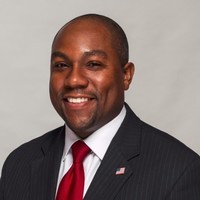|
|
|
|
|
|
|
|
|
|
 |
 |
 |
|
 |
|

Opel Jones
Senior Professional Staff
Johns Hopkins University Applied Physics Laboratory
NAM Speaker
Pattern Avoidance in Restricted Permutations
In 1974 Dumont found two types of permutations are counted by the same sequence. The first type is a permutation in which each even entry is followed by a smaller entry, and each odd entry is followed by a larger entry or ends the permutation. The second type is a permutation wherein if an entry is a deficiency, it must be even, and if an entry is an exceedance or a fixed point, it must be odd. These are now known as Dumont permutations of the first and second kinds. There are two other types of permutations which are also counted by the same sequence, known as Dumont permutations of the third and fourth kinds. In this talk we will discuss several enumerations of restricted Dumont permutations, that is Dumont permutations avoiding certain patterns. We will also briefly discuss their proofs which involve methods using induction, block decomposition, Dyck paths, and generating functions. We will conclude with a conjecture that the patterns 2143 and 3421 are indeed Wilf-equivalent on Dumont permutations of the first kind.
|
Opel Jones's Bio
Opel is a loving husband, dedicated father, and servant to the community. He mentors, tutors, volunteers in his free time through his fraternity, and coaches youth football and youth baseball. Throughout the years, Opel has worked as an engineer, mathematics and statistics lecturer, development officer, and computer scientist, at several institutions and the federal government. He also served as Director of the Leadership Institute for several years at Hampton University, teaching leadership studies and developing leaders in addition to teaching mathematics and honors seminars. Currently, he is a mathematician and analyst at The John’s Hopkins University Applied Physics Laboratory. Additionally, he is currently serving on the County Council in Howard County, Maryland. He was first elected to office in 2018, and just re-elected in 2022.
Opel earned the B.S. in mathematics from Hampton University, the M.S. in mathematics from Howard University, and the Ph.D. in mathematics also from Howard University. He is a Life Member of Alpha Phi Alpha Fraternity, Inc., initiated at Hampton University, and past president of the local Howard County chapter. His professional associations include the American Mathematical Society, the Mathematical Association of America, and the National Association of Mathematicians. Opel loves music, football and baseball, reading, Sudoku puzzles, and is a lifelong practitioner of martial arts. He and his wife, Shaundra, are extremely proud parents of three: Opel II, Ivan, and Whitley!
|
|

Victor Piercey
Professor of Mathematics and Chair of Congress
Ferris State University
MAA Executive Board Speaker
Reflections on Interdisciplinary Teaching Partnerships
Working with interdisciplinary partners to improve teaching is a rewarding experience and makes for better student learning environments. The SUMMIT-P consortium is an NSF-sponsored collection of 12 institutions where mathematics faculty are working with partner discipline faculty to revise and improve course offerings in the first two years of undergraduate education. Their work is based on research entitled “The Curriculum Foundations” conducted by the MAA Committee on Curriculum Renewal Across the First Two Years. In this talk I will share reflections on the SUMMIT-P experience, including both what we have done at Ferris and what has taken place at other institutions. I will also discuss ways other institutions could implement what we have learned from SUMMIT-P
|
Victor Piercey's Bio
Victor Piercey is a Professor of Mathematics at Ferris State University, where he also serves as the Honors Program Director. Piercey earned a Ph.D in mathematics from the University of Arizona with a dissertation in algebraic geometry. He also holds a law degree from Columbia Law School with a certificate in international and comparative law, and an interdisciplinary humanities bachelor’s degree from Michigan State University with concentrations in history, economics, and Russian.
Interdisciplinary work is at the heart of Piercey’s teaching and scholarship. He has worked closely with business, social work, and nursing faculty to develop a quantitative reasoning course titled Quantitative Reasoning for Professionals. He has integrated his legal experience into his actuarial science teaching, particularly in his financial mathematics course. In addition, he co-leads a team integrating ethical reasoning in mathematics, and has done so himself in his quantitative reasoning and actuarial science courses. He has recently started conducting research using data science to contribute to genocide prevention. In his spare time, he enjoys reading history and playing guitar.
|
|

Shushen Pu
University of West Florida
Decoding Neural Dynamics Using Machine Learning
This work explores prefrontal neural dynamics in working memory and passive states through machine learning and dimensionality reduction techniques. Neural data from rhesus monkeys were analyzed to decode task-related information and uncover cognitive mechanisms. Supervised learning models, including logistic regression and shallow neural networks, predicted task variables from firing rates with over 90% accuracy, revealing robust encoding in prefrontal and posterior parietal cortices. Principal component analysis further showed that prefrontal neurons represent stimuli in low-dimensional manifolds, undergoing rotations to minimize interference and support cognitive flexibility. These transformations occurred even without task training but became more structured post-training, aligning with task demands.
This study highlights the power of machine learning in decoding neural activity and provides insight into neural representations
|
Shushen Pu's Bio
Dr. Shusen Pu is an Assistant Professor in the Department of Mathematics and Statistics at the University of West Florida (UWF). He earned his Ph.D. in Applied Mathematics from Case Western Reserve University in 2020, specializing in stochastic processes in biological systems. Prior to joining UWF, he worked in Department of Biomedical Engineering and Department of Mathematics at Vanderbilt University, where he focused on computational neuroscience and data analysis.
Dr. Pu’s interdisciplinary research spans computational neuroscience, mathematical statistics, data analytics, and deep learning. He applies advanced mathematical and machine learning models to explore neural dynamics, working memory, and decision-making processes. His recent work has appeared in journals such as Nature Communications and Neuro Computation, and he has developed novel statistical distributions for applications in medicine, finance, and ecology.
At UWF, Dr. Pu leads several research projects and has been recognized with awards for excellence in teaching and undergraduate research mentoring. An active member of the academic community, he organizes conference sessions and presents his findings at major international events, contributing to the advancement of computational biology and data science.
|
|
 |
|
 |
 |
 |
|
| |